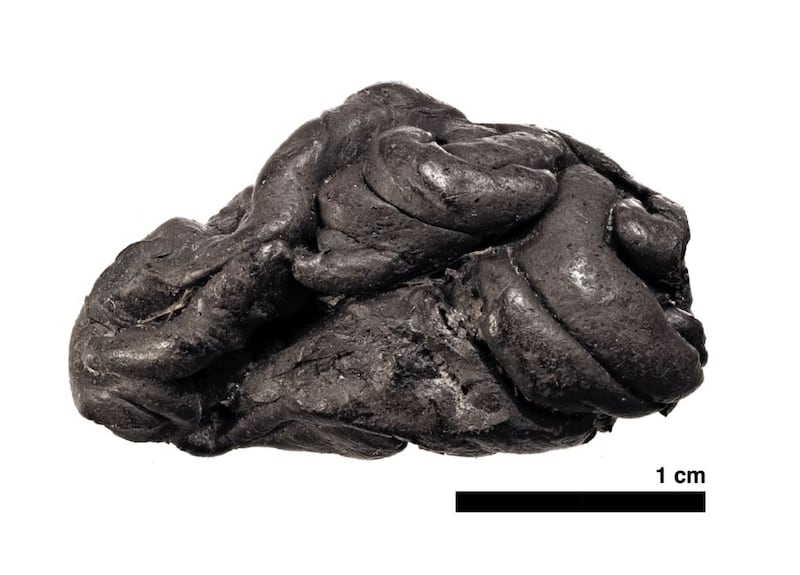The entire genetic code of a 5,700-year-old human has been extracted from a piece of ancient “chewing gum”.
Scientists examined an ancient piece of chewed birch pitch which provided insights into the oral microbiome and potential sources of the individual’s diet.
Researchers from the University of Copenhagen said it is the first time an entire ancient human genome has been obtained from anything other than bones.
Associate Professor Hannes Schroeder from the Globe Institute, University of Copenhagen, who led the research, said: “It is amazing to have gotten a complete ancient human genome from anything other than bone.
“What is more, we also retrieved DNA from oral microbes and several important human pathogens, which makes this a very valuable source of ancient DNA, especially for time periods where we have no human remains.”

Birch pitch is created by heating birch bark. It has been used as a glue since the Middle Pleistocene era – approximately 760,000 to 126,000 years ago.
Small lumps of this material have been found at archaeological sites and have often included tooth imprints, suggesting it was chewed.
Based on the human genome, the researchers could tell the birch pitch was chewed by a female.
She was genetically more closely related to hunter-gatherers from mainland Europe than to those who lived in central Scandinavia at the time.
She also probably had dark skin, dark hair and blue eyes, the study published in Nature Communications sets out.
Researchers found traces of hazelnut and duck DNA in the sample, which indicate they may have made up part of her diet
The chewed birch pitch was found during archaeological excavations at Syltholm, east of Rodbyhavn in southern Denmark.
In addition, the researchers extracted DNA from several oral microbiota from the pitch, including many commensal species and opportunistic pathogens.
They also found DNA that could be assigned to the Epstein-Barr Virus, which is known to cause infectious mononucleosis or glandular fever.
According to Professor Schroeder, such ancient chewing gums bear great potential in researching the composition of our ancestral microbiome and the evolution of important human pathogens.
He said: “It can help us understand how pathogens have evolved and spread over time, and what makes them particularly virulent in a given environment.
“At the same time, it may help predict how a pathogen will behave in the future, and how it might be contained or eradicated.”








